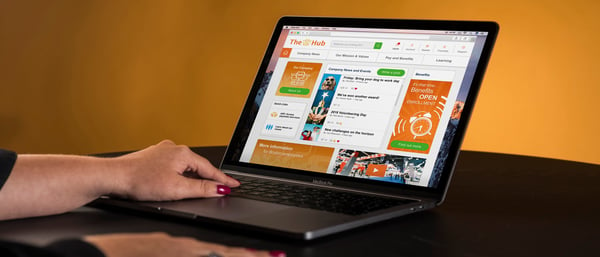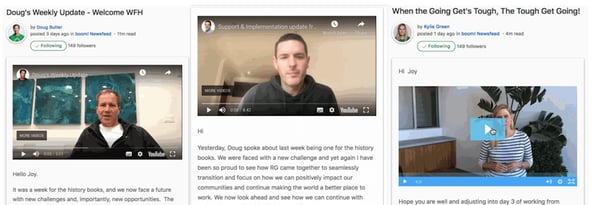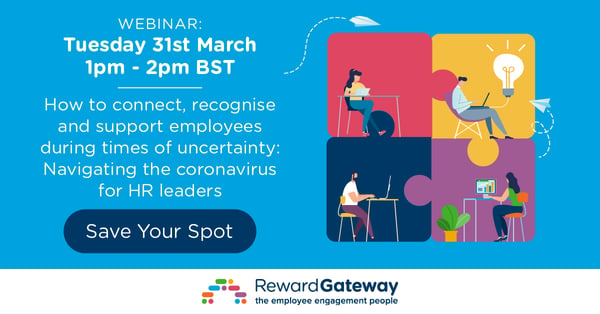6 min read
Over a very short span of time, thousands of employers across the country have either increased the number of employees working remotely, or introduced it to their workforces for the first time. Even if your company already had a remote working policy, it doesn't take long to learn that there's often more than meets the eye when it comes to setting remote employees up for success and adjusting well to remote working arrangements.
In addition to providing the right tools, we also need to establish new rhythms and channels for communicating and collaborating with each other.
More than ever, we need to prioritise open and honest communication, and make sure the achievements we don't get to see in action are still recognised and visible to the rest of the company.
Over the years, we’ve had a lot of experience with connecting our people, with eight offices in five countries, so we put together some tips to help you keep remote employees engaged:
| 1. Re-acquaint employees with your communication channels |
| 2. Maximise multiple opportunities to connect throughout the work day |
| 3. Recognise success across the globe |
| 4. Acknowledge time differences |
| 5. Appoint champions to drive connection |
1. Re-acquaint employees with your communication channels
Getting employees to communicate can be challenging at the best of times, but it's much harder when everyone is in a different room! Now is the time to establish where you expect people to receive information and how often you want them to check in to make sure they're up to date.
We recognise that continuous communication removes office silos, allows our employees to keep in touch and fosters better connections. In situations when employees can't just turn to the person next to them to ask a question, it's important to be clear about which channels to use for particular tasks, projects and fact-finding.
Remind your people where they should expect to find important information that will impact their everyday work.
We use our internal communications platform to broadcast messages to all employees. Alerts land in their email inboxes and Slack when new blogs are posted, and employees can access them immediately on their computers or mobile devices.

During times of uncertainty, when business, political and social environments are changing rapidly, we encourage employees to check that platform before they start work every day.
2. Maximise multiple opportunities to connect throughout the work day
Now is the time to proactively increase the visibility of leaders and team mates, and to communicate often. You can also make the use of company-wide comms through blog posts or videos.

You could use video-conferencing tools and introduce daily, virtual "stand-up" team meetings at the beginning of the day as an opportunity to check in with your team members, get an update on how work is progressing and see where they might need help. Use this time to communicate new information or whether priorities need to change.
Make a commitment to update your people as and when things happen. Keeping employees up to date on health and safety policies and key business decisions shows them care and concern and helps minimise anxiety by giving them information quickly and consistently. You can do this through all-staff communications, virtual meetings, instant messaging tools or (ideally) all of the above.
When employees are working remotely, there is no such thing as over-communication.
While it's tempting to wait until you have perfected an all-staff message before it goes out, try to avoid delays. Under-communication is damaging, especially during times of uncertainty, so it's important to be proactive and use multiple channels, multiple times, to make sure messages are getting through. It's ok to provide an update later if things change — that's the advantage of having technology that can instantly push a message out to your people in multiple locations!
Download our eBook to discover how to keep remote employees engaged with powerful communications »
3. Recognise success across the globe
At Reward Gateway, our employees can head to our employee engagement platform for their daily dose of success. Employees can find announcements from our Leadership Team, company targets being smashed, and a live feed of moments of recognition, all front and centre.
Making wins visible on a social recognition programme creates a celebratory atmosphere where colleagues are all steering the boat in the same direction, no matter where in the world they're sitting.
It's harder to see moments of success in action when you aren't in the office together, so it's important for people leaders and managers to proactively ask their remote team members what their wins of day or week have been. This might be a question to ask during a weekly one-to-one or your team meeting, or even an employee survey that you can roll out weekly.

Another way to celebrate your people is by taking advantage of upcoming birthdays, holidays or special moments. For people working in the office, our Experience Managers produce video messages and push them onto large screens in our different offices to recognise birthdays, anniversaries, or big achievements.
As people transition to remote work, employees can do the same by enabling peer-to-peer recognition through eCards or awards, reacting or commenting on those achievements on our "Wow wall," or having a member of the leadership team "shine the spotlight" on them through a blog post. We've seen employees sing their teammates "happy birthday" during a video-conference, and managers can send gifts via mail to create a "wow" moment from afar.
All of these remind your people that they are still being seen, and that what they do matters.
4. Acknowledge time differences
Time differences always get in the way of busy schedules when collaborating across offices but it is important to make sure that there isn’t just one person bearing the burden of late night or early morning meetings.
You want your employees to be excited about working with their peers near and far, so if it is possible to trade off the inconveniently-scheduled meetings, the person on the other end of your call will be more than appreciative.

5. Appoint champions to drive collaboration
Does your company have culture champions? The most important element while creating a team of champions is making sure there is representation from every department or team. You can nominate members or ask for volunteers who are willing to set aside some time regularly to work together and find creative ways to bring people together and celebrate (even if that means it's done online)!
Your champions are in charge of creating excitement and a sense of community. When people are working remotely, that might mean holding "virtual lunches" where people can jump into a call to catch up while they're grabbing a bite, or it might be starting a Slack channel where people can share tips about how to stay productive while at home (especially if there are kids around). The group can also play a role in gathering and communicating feedback to leadership.
It doesn’t have to be all about work, work, work. Allowing some time to connect about topics outside of work deepens connections among your people.
We might all still be busy, but prioritising asking someone how their weekend was will tell you about their hobbies, family and help fuel connections that are key to making remote teams more collaborative.
Make a goal for yourself and try to set aside a few minutes during your meetings to socialise with your colleagues, especially those that you don’t normally see in person. You may be surprised that it encourages expression and actually benefits productivity.
Connecting and engaging your people, and helping them navigating temporary remote work isn’t something that happens overnight, but with the right tools in place and a lot of collaboration, you will begin to nurture your culture and foster deeper connections.
Have we missed anything? I’d love to hear some of the ways you connect your employees in the comments section below!

Looking to learn more about connecting, recognising and supporting employees during times of uncertainty? Join us for a webinar, where you'll hear what HR leaders are doing to communicate and support employees during these stressful circumstances.

 Rebecca Thomas
Rebecca Thomas
